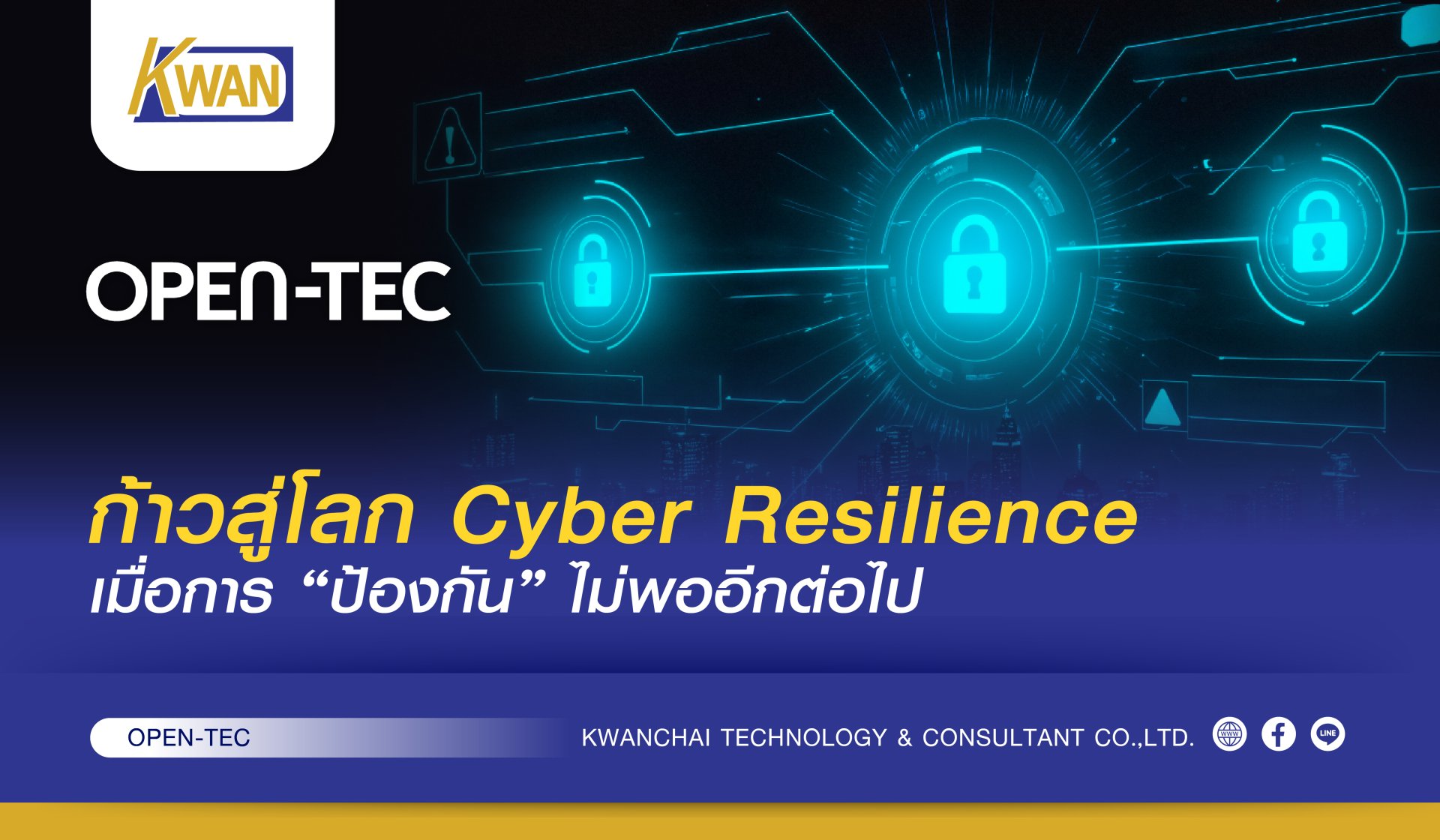Step into the world of Cyber Resilience: When “prevention” is no longer enough

When it comes to cyber threats, many people may think of computer viruses or hacking to steal data. However, today's cyber world has changed significantly. Cybercrime groups have developed more sophisticated attack techniques, targeting organizations that hold sensitive data or have the potential to hold them for ransom, using cutting-edge tools such as artificial intelligence (AI) and machine learning to increase the chances of hacking and reduce the chances of being detected. When cyber threats occur, they can have serious impacts on customer confidence, business continuity, and the overall reputation of the organization. Today, OPEN-TEC (Tech Knowledge Sharing Platform) under the supervision of TCC TECHNOLOGY GROUP will take everyone to explore new perspectives in dealing with cyber threats, not just for prevention, but also to enable organizations to recover from cyber threats quickly and be ready to move forward steadily without interruption.
The complexity of technology is a weakness for businesses.
In an era where organizations are accelerating their digital transformation, many organizations IT systems are becoming more distributed, whether its using multi-cloud, SaaS, connecting via APIs, or hybrid working models where employees can access the system from multiple devices and locations. While this flexibility increases business agility, on the other hand, it also increases the risk area for cyberattacks. Vulnerabilities from connecting to third-party systems (third-party integration), neglect of continuous system maintenance, or incorrect settings are all doors that may be unknowingly left open. And many times, it is the point that organizations themselves overlook. These points in turn become important channels for cybercriminals to access data or attack systems. And if organizations do not have adequate countermeasures, it may mean missing the opportunity to control the situation from the beginning.
Prevention alone may no longer be enough
Over the years, many organizations have been seriously investing in cybersecurity, whether it be network traffic security (Firewall), endpoint protection, or signature-based detection, which are all important foundations for maintaining system security. However, according to IBMs Cost of a Data Breach Report 2024, it takes an average of 178 days for an organization to detect a breach and another 50 days to control the incident, even with the help of security teams and security tools.1 This delay gives attackers plenty of time to steal data, delete evidence, or hide channels to re-attach. All of this can happen without the organization realizing what happened. Therefore, it is important for organizations to be aware of their ability to respond and recover quickly when an unexpected event occurs, because in reality, no system is completely secure.
Cyber Resilience: Rethinking a World Where Risk Is Inevitable
Cyber Resilience is becoming a widely accepted concept among leading organizations around the world. This is not because these organizations are resigned to attacks, but because they realize that risk is inevitable. Therefore, it is important to be prepared to respond most effectively. Cyber Resilience does not mean that organizations are immune to every attack, but it means that organizations can quickly recognize an attack, respond accurately, and resume business without severe damage through comprehensive incident response planning and regular emergency drills.
Finally, cyber threats are not far away and are not just about technology. They are also related to people, processes, and strategic planning. Organizations that are well-prepared in terms of prevention, response, and recovery will be able to handle unexpected situations with confidence.
OPEN-TEC / Dataxet infoquest (PR)



